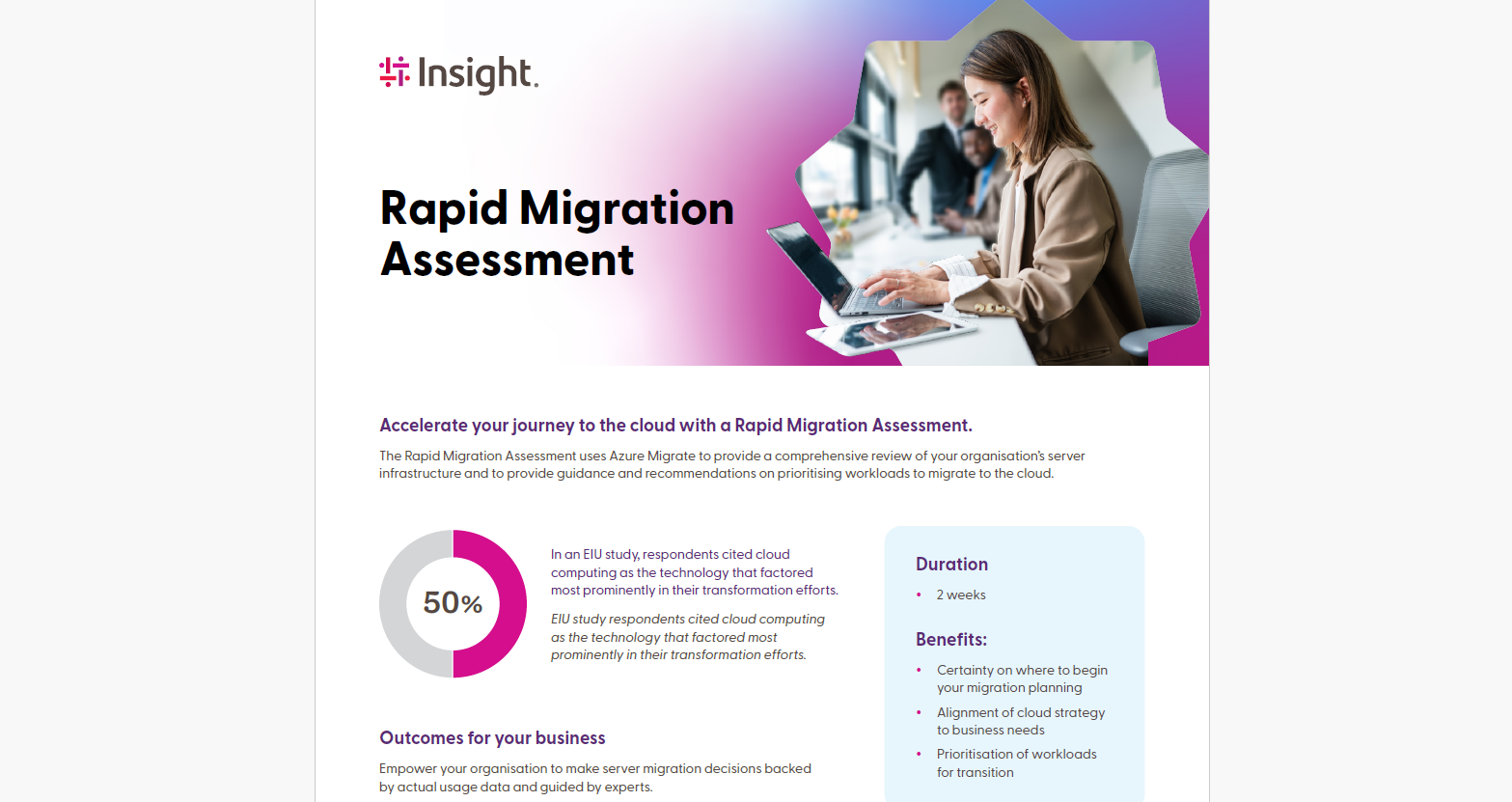Article The Business Benefits of Moving On-premise Solutions to the Cloud
It’s 2019, and the cloud isn’t what it used to be. As enterprise cloud solutions have matured over the last few years, businesses have begun to realise even higher-level benefits.
By Insight Editor / 27 Nov 2018 / Topics: Microsoft Azure Cloud

No company today has to “jump off the cliff” into the cloud. With solutions such as Microsoft Azure, for example, you can leverage legacy solutions while still accessing the power and flexibility of cloud-based ones.
Let’s explore four key areas that are driving the move to the cloud — and providing the most significant business benefits to enterprises and smaller businesses alike.
1. Security
In most cases, the old concerns about security in the cloud have dissipated. Enterprise security protocols and standards are so well developed that companies are now realising augmented security they never dreamed of with older on-premise solutions.
For example, one seldom recognised benefit of moving security to the cloud is the “network effect.” Because cloud service providers are managing thousands of clients at a time, security advancements can be equitably applied to the entire user base — something that’s impossible when enterprises operate as silos.
Similarly, the continuous development cycles of cloud solutions mean security upgrades are applied immediately rather than twice yearly. And many security solutions can be managed both on premises and in the cloud — giving you dual benefits and simplifying your transition to a hybrid environment.
2. Data and app management
Cloud-based solutions dramatically enhance backup, disaster recovery, archiving, and management of data and applications. You can still choose how you want to balance on-premise and cloud-based services (sometimes on premises is still preferred or even mandated by regulators) while gaining the functional benefits of moving toward the cloud.
These include protecting crucial workloads, applications and data from catastrophic events, as well as creating new regulations and efficiencies that promote quicker development of new tools.
3. File management
Over time, data movement in the cloud has become easier and more dependable. You should still be aware of challenges related to platform compatibility (“Will my data and schemas translate to this new architecture?”), but standardisations in cloud solutions aid movement. Consolidated business cloud environments such as Azure reduce these earlier challenges to near zero.
Most critically, moving to the cloud enables your business to modernise Network-Attached Storage (NAS) with scalable file sharing, global access, and robust backup and archive capabilities. This can save enormous amounts of capital previously allocated to physical hardware and infrastructure upgrades.
4. Accelerated development
You’ll only truly realise the benefits of cloud-based solutions when you embrace the continuous innovation cycles afforded by them. In particular, DevOps will move your company beyond periodic, total-refresh development and upgrade cycles and allow you to innovate at the pace of business.
In practice, this means business innovation is unshackled from old application development cycles. Today’s cloud solutions accommodate and optimise legacy applications and structures across any operating system or business function — ensuring continued benefits from previous innovations and investments.
Getting back to business
As cloud-based solutions have matured, their business benefits have evolved. Most notably, Total Cost of Ownership (TCO) can be massively reduced by cutting out huge hardware and infrastructure investments, all while increasing efficiency and functionality.
Additionally, moving on-premise services to the cloud offers distinct customer-facing benefits. You can access new tools to enhance the customer experience — using media streaming, web hosting, API management, big data and more — and optimise the security and management of your data. These innovations free you to focus on running your business instead of devoting endless resources to managing IT.
How Microsoft Azure helps
Azure has become the industry standard for making hybrid cloud solutions a reality for businesses at any stage of cloud adoption. A hybrid cloud combines data centre and cloud competencies into a full, consolidated business cloud environment. By doing so, it allows companies to manage and protect data and applications no matter where they reside, with minimal latency, optimised security and essentially limitless scalability.



